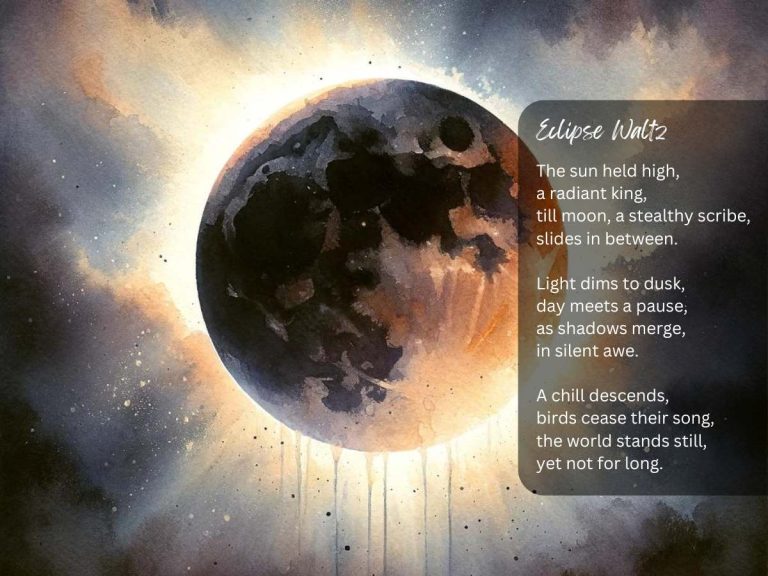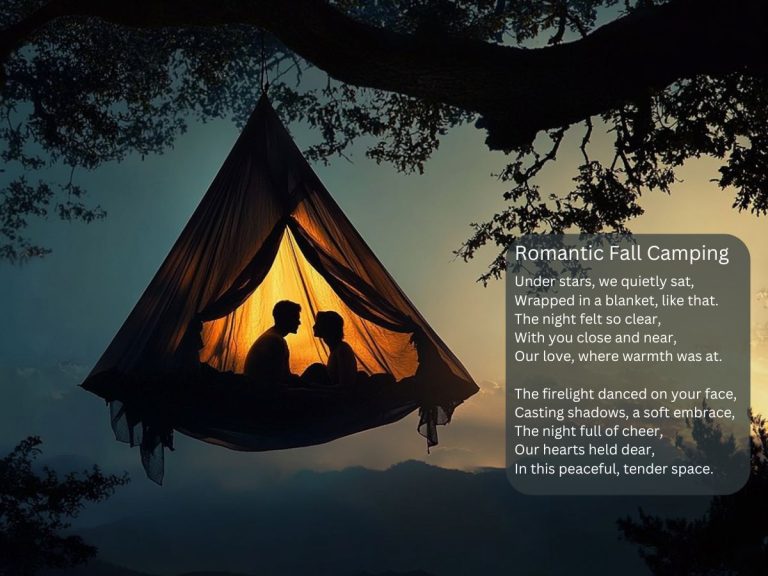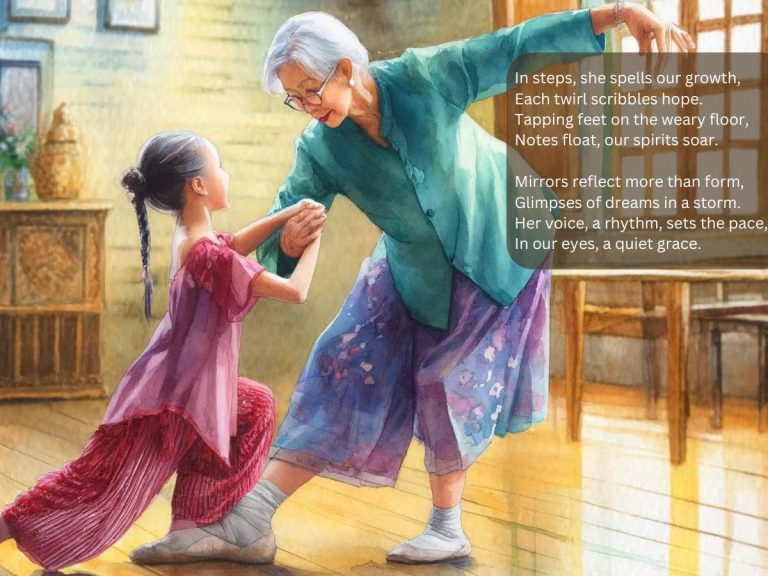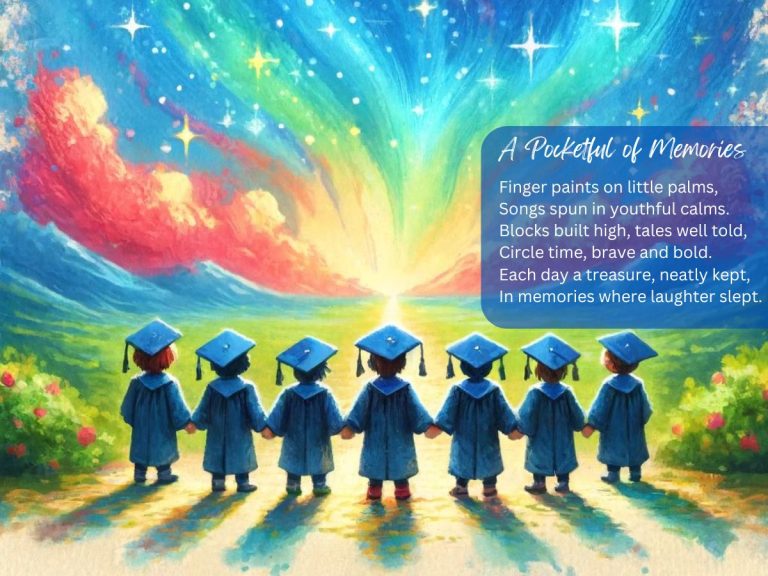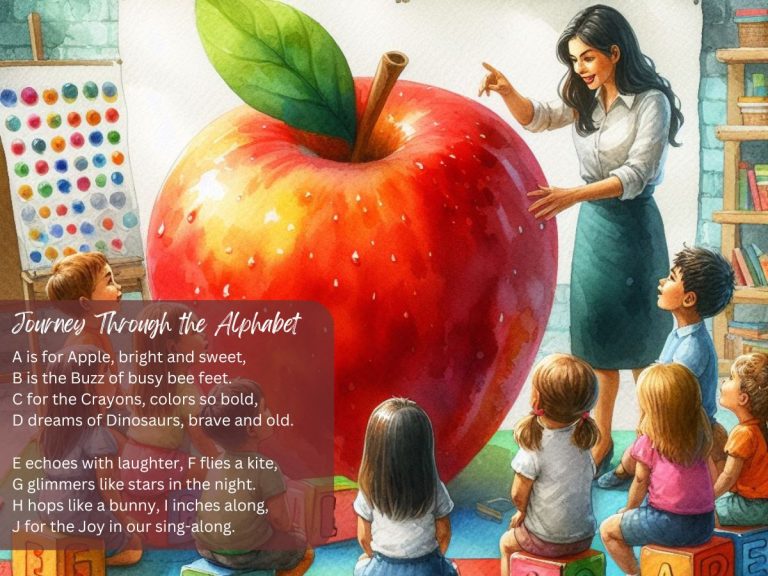The Dance of Death
In shadows where the cold winds blow,
Bones clatter in a rhythmic flow.
Pale moonlight on the graves below,
Steps echo the tales of woe.
Grim partners twirl with silent grace,
Skulls gleam beneath the stars’ embrace.
A macabre ball, a chilling place,
Each step a ghost of life’s erase.
No breath, just silence in the spin,
Dark robes flutter, thin as skin.
A tango of souls, lost kin begin,
Dancing to the tune of sin.
Yet in this dance, no fear we find,
Just remnants of the human mind.
In death’s ballet, all are entwined—
The final waltz of humankind.
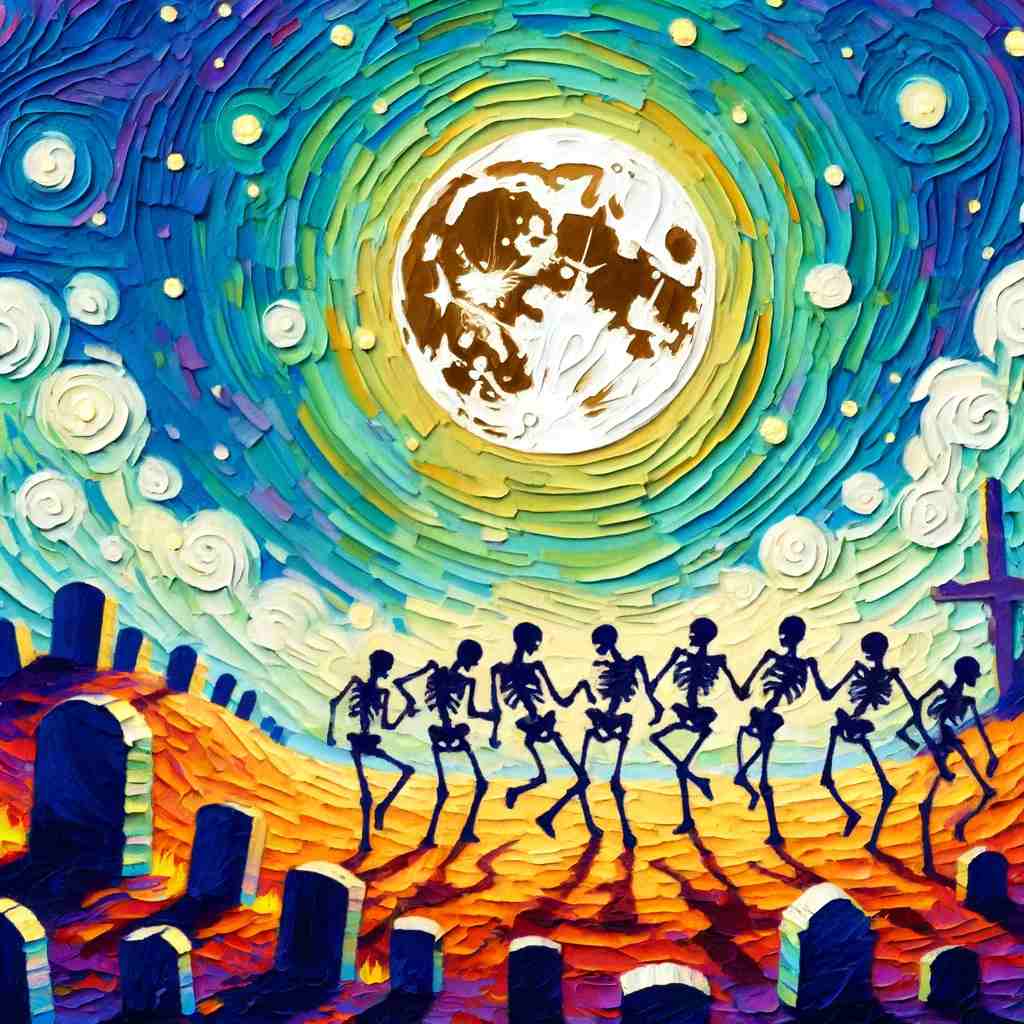
Meaning
The Dance of Death poem presents a haunting visual of a spectral dance held in a graveyard, symbolizing the inevitable march toward death that all humans share. The poem weaves a somber celebration of mortality, where the dead partake in a final, eternal dance under the moonlit sky, illustrating death not as a fearful end but as a communal return to the earth.
Inspiration Behind
I imagined a misty graveyard at night, the eerie silence punctuated by the clack of bone on bone. The idea of death personified as a dance partner intrigued me. It’s a universal theme—death comes to us all, and in this poem, it comes not as a thief but as a lead dancer in the waltz of eternity. Each image I saw in my mind was vivid: the moon casting long shadows, the stars watching silently. This dance, while grim, is also a celebration, a final gathering where every soul has its place.

